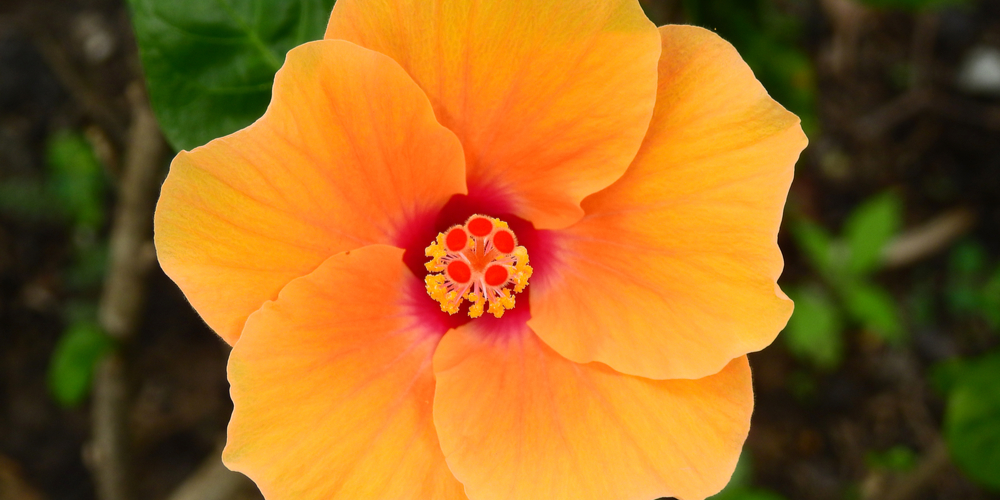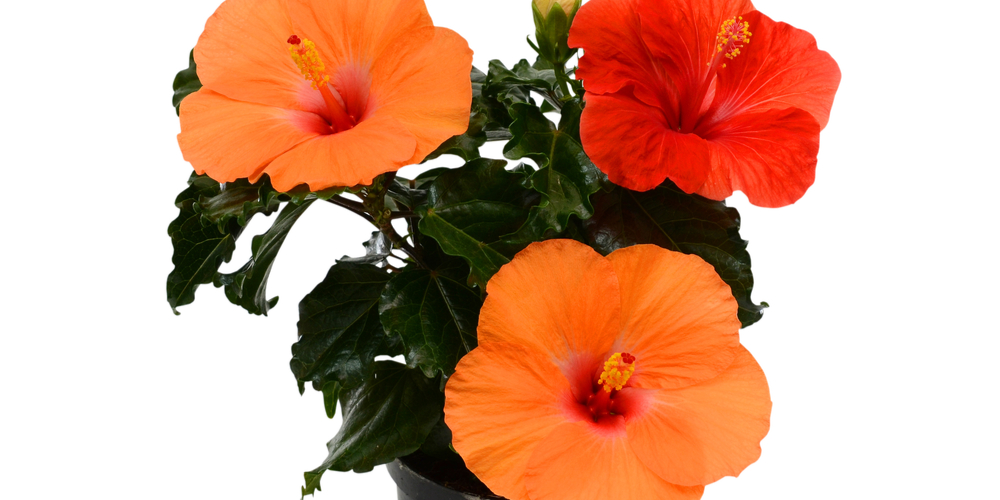Nothing beats a tropical summer for relaxing by the pool, basking in the sun, and sipping colorful beverages with strange names. While in the yard, bright colors, vivid green greenery, and happy, flourishing plants come to mind. Let’s look at how to care for a Fiesta Hibiscus!
What is a Fiesta Hibiscus?
Choosing a favorite among the many lovely hibiscus flowers isn’t easy. The newest addition being, the Fiesta Hibiscus — Hibiscus rosa-Sinensis — has taken the first spot this year. Also known as the Hawaiian Sunset Hibiscus, it looks like a beautiful dawn or dusk. Not only are the blossoms breathtakingly beautiful, but it’s also fascinating to watch the hues change during the day.
The Fiesta Hibiscus hues switch from a unique, deep and vibrant burgundy, orange, maroon, and yellow to warm tones, similar to how a sunrise does. Are you considering planting a Fiesta Hibiscus in your yard or garden? This low-maintenance tropical plant is a lovely addition to a park or home.
How to care for a Fiesta Hibiscus
Sunlight
An entire day of sunshine may be detrimental to the Fiesta Hibiscus in dry and hot weather. They enjoy the light and require a lot of it to bloom, but 6 hours of direct sunlight each day is generally adequate. To avoid overpowering the plant in warmer climates, choose a location that gets just full sunlight. They may thrive in shady conditions, but they will not generate the known breathtaking flowers.
Like all other tropical house plants, this shrub will require a lot of full days of indirect, bright sunlight if developed indoors. Choose a location next to a sunny window spot that receives a few hours of direct sun during the day if you want the plant to bloom more frequently.
Watering
The flowering phase of the hibiscus necessitates a considerable quantity of water. In hot weather, the hibiscus will require daily watering. On the other hand, the hibiscus requires so much less water as the weather gets cold, and far too much water could indeed destroy it. Water the hibiscus only if the soil feels extremely dry during the winter.
Before thoroughly soaking the potting mix, let the ground become visibly dry in between waterings but not completely dry. Your plants will prosper, and the roots will remain healthy once you do it regularly.
Pruning
Pruning is required to maintain size and height while encouraging a bushy form. You can prune at any time between early spring and early fall, but it will have sluggish flowering as buds shape on the developing tips. Pruning in the late winter or early spring will allow new development to establish flower buds.
Humidity
The moisture levels for the plant, on the other hand, shouldn’t go below 30%. It’s because it could indeed cause the root to decay, which can result in leaf droopiness. However, when there are signs of root rot, you should not be concerned as long as the soil is kept moist.
Fertilizer
To thrive, Fiesta Hibiscus doesn’t require a lot of fertilizer. Once you want your hibiscus to bloom more frequently, a chemically treated hibiscus fertilizer is the method to use.
Slow-release compost is a great low-maintenance alternative because they only need to be applied every several months instead of monthly. Once you hydrate the crop, the fertilizer gradually releases nutrients, offering it precisely what is required whenever the plant needs it.
To avert over-fertilizing, use a liquid fertilizer every month in the summer and spring or if the plant is lacking in blooms. Fertilizers with moderate Nitrogen (N), less Phosphorus (P), and more Potassium (K) worth are ideal for encouraging blooming and lush green leaves.
Soil Type
The majority of peat-based potting blends available are suitable for growing Fiesta hibiscus. They’re slightly acidic, and they usually include a starter fertilizer in the mix. Peat, vermiculite, and perlite are all common ingredients in potting soil.
Fiesta Hibiscus Propagation
You can use cuttings or seeds to propagate the hibiscus. On the other hand, Cuttings are the best way to ensure that your bred ‘Fiesta’ Hibiscus appears precisely like the parent plant. When it gets to tropical hibiscus crops, propagation from the seed can produce unpredictable results. If you want a carbon copy, go with cuttings, though seeds are still a good option if you’re trying something new.

